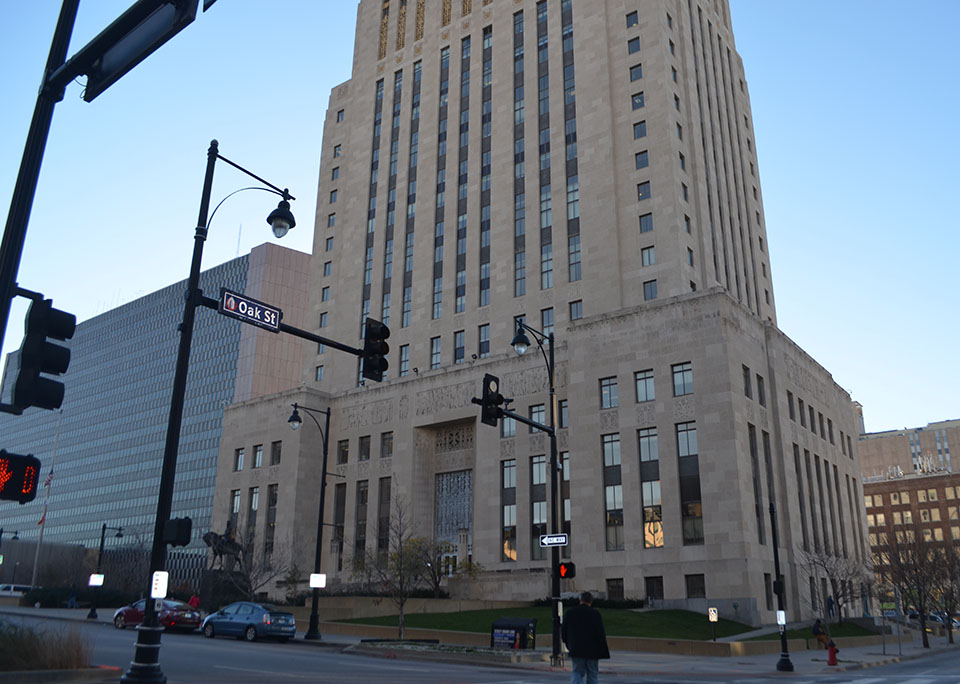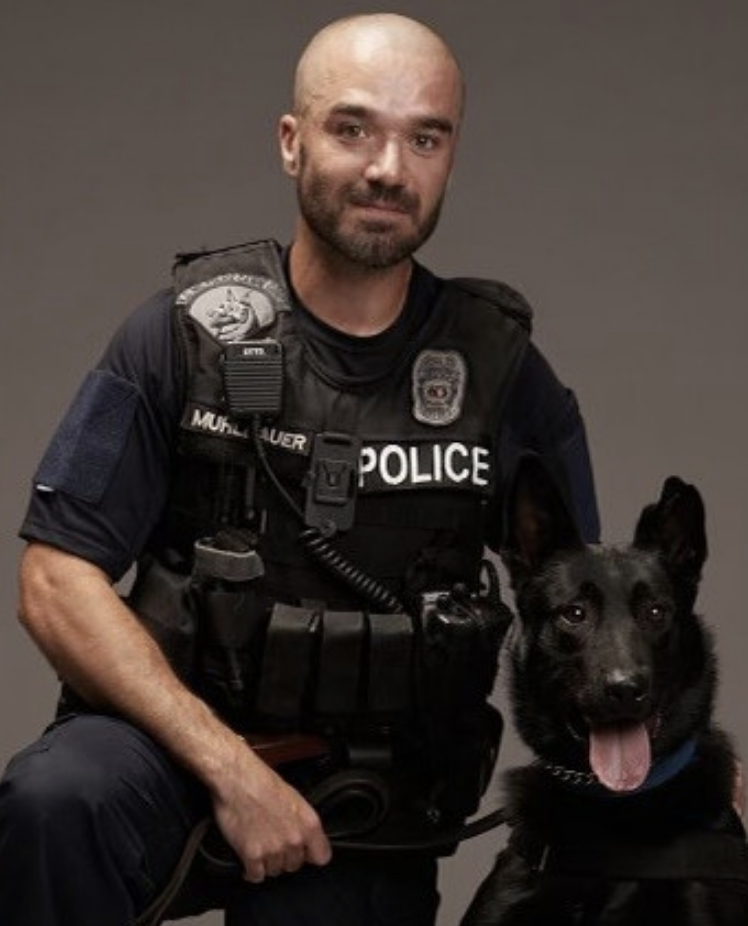Before reading this story, the Northeast News strongly recommends that you first read our story from Day 2 of the Thu Hong Nguyen’s 2nd Degree Murder and Arson trial, which was published on Tuesday, July 17.
By Paul Thompson
Northeast News
Five more witnesses were called to the stand on Wednesday, July 18 in the case against alleged arsonist Thu Hong Nguyen.
The third day of Nguyen’s bench trial on charges of 2nd Degree Murder and Arson was dominated by the testimony of Alcohol, Tobacco, Firearms and Explosives (ATF) special agent Ryan Zornes, a Certified Fire Investigator (CFI) who worked the arson case related to the October 12, 2015 Independence Avenue fire that claimed the lives of firefighters Larry Leggio and John Mesh.
The prosecution worked early on to characterize Zornes’s credentials as impeccable. He was required to work 100 fire scenes and complete at least 80 hours of courses in order to be certified as a CFI – a certification earned by only about 100 ATF agents. Since becoming a CFI, he has worked approximately 250 additional fire scenes. Named as the lead investigator in the deadly Independence Avenue fire, it was Zornes who ultimately declared that the fire was incendiary, or caused by a human act. It was also Zornes who initiated the criminal case against Thu Hong Nguyen.
While on the witness stand, Zornes ran through the order of steps in a fire investigation: 1) determine the location of origin; 2) determine cause of the fire; 3) determine classification: Accidental (electrical, spontaneous combustion), Natural (lightning strike), Incendiary, or Undetermined; 4) if classified Incendiary, a criminal investigation is conducted.
In describing his methodology, Zornes described his deference to the scientific method, suggesting that as a highly-trained CFI, he was keenly aware of the dangers of presumptive bias when conducting a fire investigation.
“There are just as many accidental incidents as there are incendiary incidents,” Zornes said. “Again, when we arrive we don’t know what the cause is; that’s why we’re there.”
The prosecution attempted throughout the morning to establish the level of detail that went into the ATF investigation. The origin and cause investigation included more than 30 firefighter statements, more than a dozen resident statements, seven business statements, three statements from adjacent businesses, conversations with the building owner, 10 days of excavation and extensive cognitive and laboratory testing. The investigation was described as a team effort; in total, 138 personnel assisted with the fire investigation between national and local components, all of whom were there within 24 hours of the incident.
When it was over, Zornes concluded that the fire originated in the northeast corner of the storage closet in Thu Hong Nguyen’s nail salon (LN Nails & Spa), and that the cause was intentional.
Much of Zornes’s findings were informed by firefighters who responded to the scene. One reported seeing a white-hot heat signature in the area around the nail salon, while another reported that the flames in Apartment C of the three-story, mixed-use building – located directly above the nail salon – was the hottest he had ever felt at a scene. That firefighter further stated that he felt like he was “being baked from the floor” while in the apartment. Two more firefighters said they punched a hole in the northeast wall of the African Store, which was directly next door to the nail salon, where they observed significant fire coming from the area of origin.
Though Zornes and his team did not uncover any heat sources (lighters, matches, etc.) in the proposed area of origin, ATF guidelines allow investigators to infer that a heat source such as a lighter is likely to be removed from the scene of an incendiary fire.
The fire investigator was also able to obtain surveillance footage that showed Nguyen and nail salon employee Long Pham leaving the business on October 12, 2015. The surveillance footage, shot from a restaurant called the Safari Cafe from across Independence Avenue, shows one individual leave the store at 7:10 p.m., and a second individual turn off the interior lights and follow shortly thereafter at 7:12 p.m. Store employee Long Pham later testified that he was first out the door, where he waited for Thu Hong Nguyen to close up the shop. By 7:17 p.m., the building’s electricity had begun to shut down, as a result of the flames reaching the structure’s electrical system.
Later in the investigation, Zornes looked at the insurance and financial pictures of the building. The owner of the three-story structure was a man named Bo Tran, but Tran could no longer insure the building after a January 2015 apartment fire. Tran’s insurance was changed after January 2015 from a policy that paid out to him to a policy that would pay out to the mortgage company, Country Club Bank, which held the note on the building.
Nail salon employee Long Pham also stood to gain nothing from the fire. In fact, Long owned the tools he used for the business, and they were destroyed in the fire. Because they were valued by Pham at more than $1,000, and he lost his place of employment, Zornes concluded that Long was actually hurt financially.
Defense Attorney Molly Hastings, meanwhile, questioned the recollection of firefighters at the scene and worked to establish that the building had been plagued with electrical issues prior to the blaze during her cross examination, which lasted almost as long as Zornes’s direct testimony.
One focus was the fact that a firefighter forced entry into the front door of the nail salon, but none of the firefighters actually entered the salon. It stands to reason, Hastings opined, that if firefighters on scene had seen fire in the salon, they would have entered.
Hastings also spent time focusing on the statements provided by tenants of the second and third-floor apartments, who lived above the first-floor retail businesses. One couple, the Bui’s, said that they saw smoke at around 7 p.m. If accurate, Hastings said, that would have been while Nguyen was still in the salon. Zornes responded, however, that the statement from the Bui’s was an approximation.
Another tenant named Ricky Davidson told authorities that his fan started smoking on the evening of October 12, but he never said what time it started smoking at. That was inferred by investigators based on Davidson also saying that he heard another tenant screaming about the fire. The building’s owner, Bo Tran, told one tenant not to talk to the investigators or mention any electrical work that had been done in the building. A resident named Rodney Blasche said that the smoke smelled like burning electrical wires, while tenant Lawrence Lee said he had numerous problems throughout the apartment, and that he would often blow the breakers. At least two tenants, Hastings added, said that there was exposed wiring in their apartments.
The second witness of the day was Misty Levron, who was first introduced during the testimony of Zornes.
Levron told Zornes that while incarcerated with Thu Hong Nguyen, the defendant acknowledged culpability for starting the deadly fire. According to Levron, Nguyen told her that she set a fire that killed people using liquid from her nail salon. Nguyen said that she didn’t expect things to go wrong, and that she had done it before, but that she had never been investigated for it.
Levron suggested that when she was initially told the information, she called her husband from jail and told him she had important information she needed to tell someone about.
Hastings was quick to question the story of Levron, who she said was being held on a warrant related to providing false or inaccurate information in an effort to get pills from a hospital.
While Zornes contended that Levron was never offered anything in exchange for her testimony, Hastings countered that Misty Levron made 51 phone calls before she sat down for her interview with ATF. Recorded calls from jail revealed that Levron told her husband that she was only going to meet with law enforcement if her charges were dropped.
Zornes agreed that in his understanding, Levron initially intended to withhold information on Nguyen’s case unless her charges were dropped. Ultimately, though, he said that Levron provided information without help from authorities. That said, Hastings pointed out that she was released from prison two weeks after the interview, and was never extradited back to Florida, where her initial infraction occurred.
In her own witness testimony, Levron said that she first met Nguyen after the defendant’s more than six-hour interview with ATF officials in late October of 2015. Levron said that she felt bad for Nguyen, who seemed scared, and that the two huddled together for warmth while locked in a cold cell. After hearing what amounted to a confession from Nguyen, Levron developed a plan: to take the information she had been given to try and convince law enforcement to help her with her charges.
Levron eventually contacted a case manager in the Jackson County jail, asking about the timeline for her own case and implying that she had important information that she would like to talk to somebody about. That didn’t pan out, so roughly two weeks later, Levron says that she reached out to a corrections officer. In the meantime, Levron had seen on TV that Nguyen had been charged with murder.
She ultimately abandoned her plan to leverage that information, she says, feeling a change of heart based on the severity of the case.
“That could have been my kids,” Levron said. “I didn’t want that blood on my hands.”
Hastings pressed Levron on that issue. During Levron’s prior deposition with Hastings, she had suggested that by the time she met with ATF officials, she would have turned down help with her outstanding warrants, even if authorities had offered it as a sort of in-kind donation. Hastings pointed out that Levron seemed to waver between extremes; in one moment hoping to leverage the damaging information about Nguyen, and in another, at least hypothetically rejecting it.
“You wanted to use the information to leverage a benefit for yourself, and you admit that was your initial plan,” Hastings said.
Eventually, the topic moved to Levron’s outstanding tickets in Jackson County. Hastings wanted to know: was Levron going to take care of that ticket right after court?
“I have the money to pay my ticket,” Levron responded.
Hastings repeated the question: you’re going to take care of that right after court?
Levron repeated her reply: “I have the money to pay my ticket.”
“I’ll take that as a no,” Hastings replied, before telling Judge Joel P. Fahnestock that she had no further questions.
The last three witnesses of the day focused on Lee’s Summit, where another of Thu Hong Nguyen’s nail salons suffered fire damage back on July 25, 2013.
The first of the three Lee’s Summit witnesses was Melissa Vaughn, who was at the salon on the day of the fire. She was having her tires changed at a nearby auto shop. She had enough time, so she decided to get her nails done at Nails U.S.A., where Thu Hong Nguyen worked. Vaughn had never been there before, and she said it took about a half hour.
When the pedicure was finished she went outside to let her toes dry and smoke a cigarette. Eventually she saw the three employees leave the store, and realized that they were leaving early. She didn’t think much more of it, and went to a tanning salon to browse the shelves. When she left the tanning store, she walked back past the nail salon and saw amber lights inside the store. After a beat, she identified the lights as a fire and called the police. Vaughn then went to alert neighboring businesses that there was a fire in a nearby store.
The next witnesses were Lee’s Summit Police Officer Eric Hennig and Lee’s Summit Fire Department fire investigator Shawn Burgess. Hennig responded to the fire at Nails U.S.A. on July 25, 2013, while Burgess served as the fire investigator at the scene.
Hennig was working crowd control, allowing firefighters to do their job.
“Once the fire was contained, I was approached by three women,” Hennig said. “One said she worked at the business and was the mother of the owner.”
That woman said that they closed up at approximately 6:30 p.m. due to lack of business, and added that approximately 10-15 minutes after she had left, she received a phone call from her son, who said that she needed to go back because there was a fire at the building.
Burgess classified the cause of the Lee’s Summit fire as a probable accident. Since that time, though, he suggested that he has received additional training as a fire investigator. He now acknowledges that he never talked to the Lee’s Summit Police Department, the 9-1-1 caller, other employees of the nail salon or the insurance investigator at the time he made his determination.
Burgess added that his conclusions about the fire would be different today, thanks to the additional training and experience he has gained over the intervening years.
“I would have classified it as an undetermined fire.”
Check back in to the Northeast News later this week for coverage from Division 9 of the 16th Circuit Court of Jackson.




















